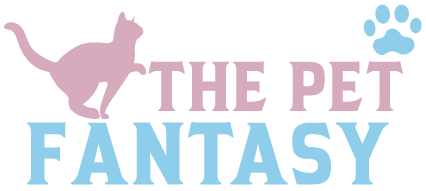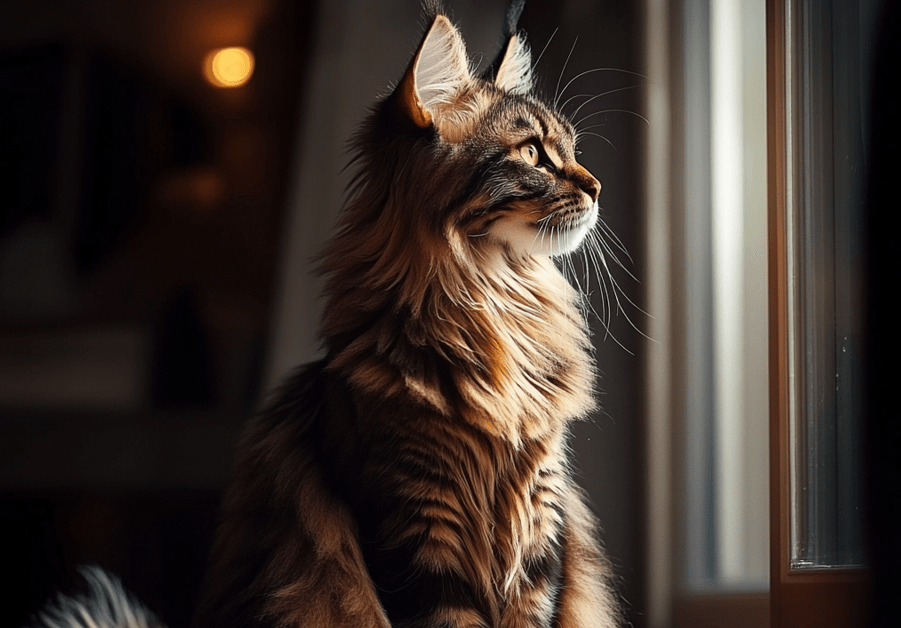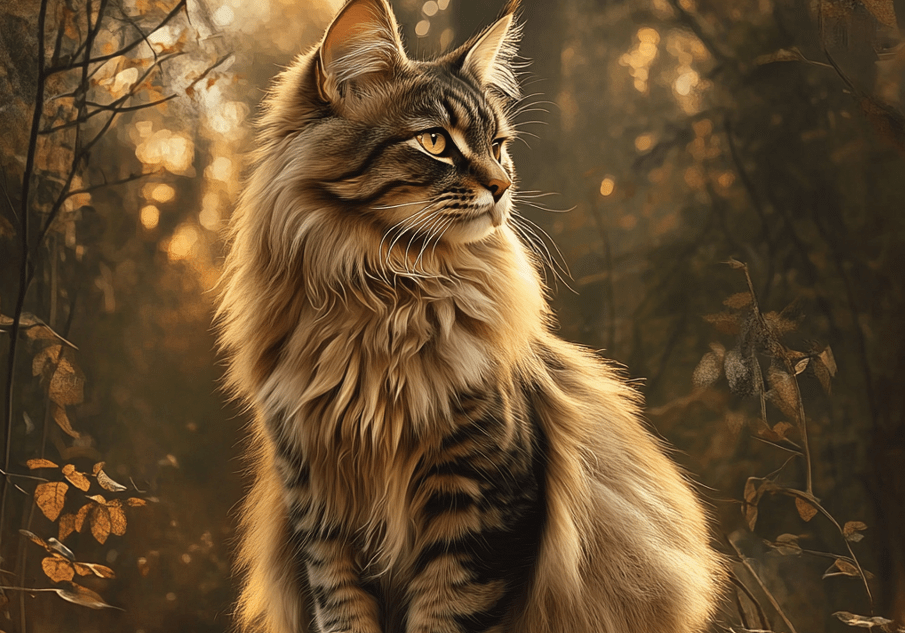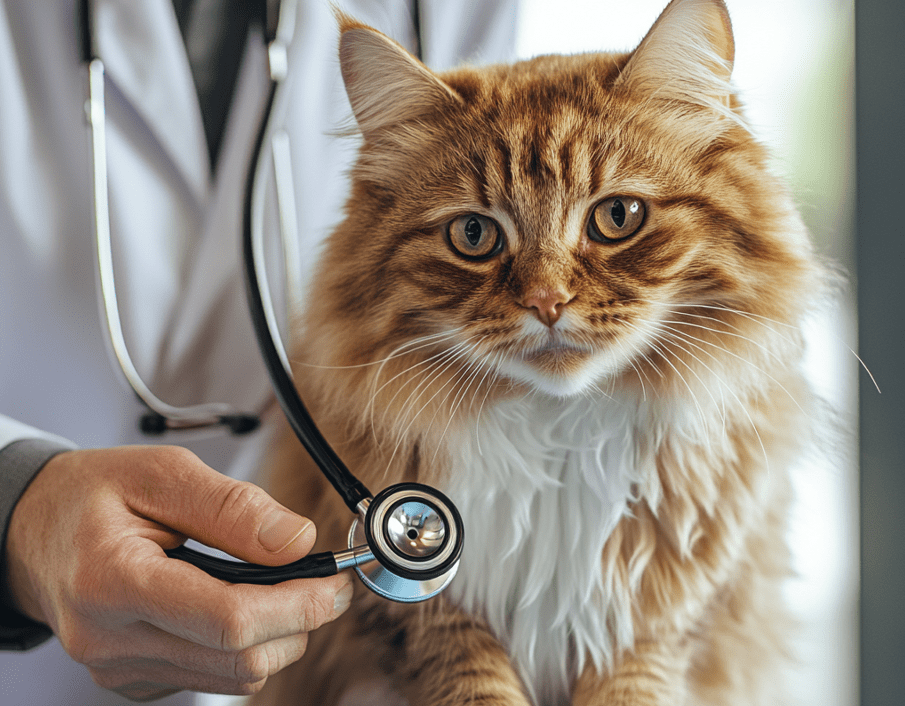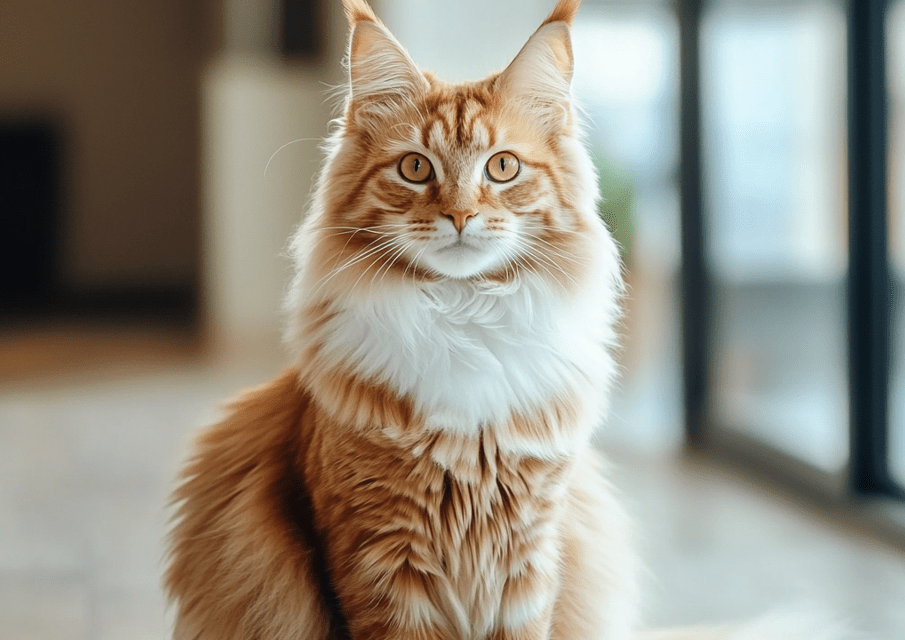
Before we dive into the information, it is essential for cat owners to be aware of Maine Coon cat genetic disorders. This will ensure that your furry friend has a long and healthy life. Maine Coon cats are a gentle, playful breed that is much loved by cat lovers. These big social cats are well known for their vocalizations and they often chirp, chatter, and create melodious sounds. Maine Coons are known to make great companions, and have a history that goes back thousands of years. They are thought to have evolved from the Norwegian Forest Cat, alongside a “mysterious and allegedly extinct breed.”
Maine Coons are hunters by nature and were kept by Vikings on their ships to control rodent populations. They are often big enough to earn their place in the Guinness Book of World Records. Although they are charming and powerful, they are also susceptible to a few genetic health problems. Here is a list of the five standard breed-specific disorders that are most common in this rare breed:
1.Spinal Muscular Atrophy (SMA):

SMA is a disease which affects the neurons in a cat’s spinal cord, resulting in an unusual walking style and posture. This is not a fatal or generally painful condition for Maine Coons, but it is caused by a recessive gene. If a kitten inherits this gene from both its parents, symptoms of SMA usually develop when it is between 3 and 4 months old. But kittens that inherit the gene from only one parent will not get the disease.
General signs and symptoms of SMA can include:
1.Atrophy of the hind leg muscles causing sway when walking.
2.An abnormal posture.
3.Trouble jumping.
4.Muscle weakness and gradual loss of stability.
5.Fasciculation (small muscle tremors or involuntary muscle twitches).
Unfortunately, there is no known treatment to stop or reverse the progress of SMA. But if properly cared for, cats with this condition can live long, healthy lives.
Because of limited mobility the cat is less able to escape dangerous stimuli when they are outside of the home, it is best to keep them as indoor cats to keep them comfortable and safe. Owners also should keep food, water and litter boxes on the same level to avoid the need for climbing or jumping. If your cat likes to lounge across high places or loves lying on shelves, bookcases or the tops of cupboards, then add some stairs or little stools there to help them get up and down easily and safely.
2.Hypertrophic Cardiomyopathy (HCM)

Hypertrophic Cardiomyopathy (HCM) is the most common heart disease in cats (especially in Maine Coons), can occur in middle-aged to older cats. This disorder thickens the heart’s walls, reducing its functionality in pumping blood properly. It can lead to heart failure over time and, in some cases, sudden death. A gene thought to be responsible for causing HCM has been discovered, but new research indicates that one in three cats tested genetically can still go on to develop the disease. Another important role that breeders play in preventing HCM is that they conduct genetic testing on every breeding cat. In fact, cats with HCM may not show any symptoms at all. Diagnosis is usually confirmed with a cardiac ultrasound, which should be performed on an annual basis starting at approximately 6 years of age.
Symptoms of Hypertrophic Cardiomyopathy in Cats:
1.Lethargy
2.Open-mouthed breathing
3.Rapid or labored breathing
4.Coughing
5.Excessive vomiting
Conditions Associated with HCM in Cats:
1.Blood clots within the heart
2.Thromboembolism (blood clots in deep veins)
3.Acute pain or paralysis of the hind limbs
4.Rapid heart rate
5.Irregular heart rhythms (arrhythmias)
6.Weak pulse
Although HCM is not curable, management consists of medications that reduce heart rate, control abnormal heartbeats, improve circulation of blood, prevent clots, and relieve fluid accumulation due to heart failure. Pain management might be needed, too. A diet of low sodium specifically designed to aid and maintain whole needs is highly suggested. Other natural support may come from natural supplements like ubiquinol (CoQ10), taurine, L-arginine, acetyl L-carnitine, omega-3 fatty acids, heart glandulars and certain herbs.
3.Hip Dysplasia in Maine Coons

Hip dysplasia is an orthopedic disease of the hip joint that can affect Maine Coons, with an estimated 20% chance of developing this condition. This happens when the socket part of the hip does not completely enclose the ball of the upper thighbone, making the joint loose or even dislocated. Identification and treatment in the early stages lead to good outcome.
Early signs of hip dysplasia can be subtle and more difficult to detect, like looseness in the joint or mild hip pain.
Other frequent symptoms include:
1.Hesitating or refusing to jump, run or climb
2.Experiencing difficulty getting up from a lying down or seated position
3.Slight or persistent limping in the hind legs, particularly after exercise.
4.A scratching noise when the cat jumps
5.Muscle decreased in the thighs and increased muscle in the shoulders as a cat transfers weight on the front legs to reduce hip pain.
6.A swaying or wobbly walk
A detailed physical exam and X-rays are necessary to diagnose hip dysplasia. Treatment depends on how seriously the condition has affected your pet which is defined by the X-ray and with the symptoms shown by your cat. Choices range from medications to manage pain to surgical procedures, such as replacing a joint.
Some new treatments are: stem cell therapy, platelet-rich plasma, physical therapy, acupuncture, cold laser therapy. Keeping your Maine Coon at a healthy weight is vital, and if he is overweight, a weight-loss program can greatly reduce joint pain.
4.Stomatitis

Stomatitis has become one of the most common health issues experienced by Maine Coons. With its painful ulcers and inflammation of the gums and mouth, this disease can make eating difficult for the suffering cat. If you observe any of the following signs, make an appointment with a veterinarian for an assessment:
1.Loss of appetite
2.Unexplained weight loss
3.Bad breath
4.Pawing at the face or mouth
5.Dropping food while eating
6.Unkempt or messy fur
7.Screaming in pain while eating
Diagnosing feline stomatitis requires a physical exam, dental X-rays, and several blood tests to eliminate other underlying conditions including feline leukemia virus, feline immunodeficiency virus, liver or kidney disease or oral infections. Unfortunately, there is no definitive test for stomatitis, and in chronic cases, teeth may need to be removed to minimize symptoms.
The main aim of treatment is to reduce inflammation, but this condition tends to be poorly treated with medications. The natural remedies for inflammation can help. Cold laser therapy has worked for many and raw feeding may help with overall gum health. Helpful supplements include dental drops, phytosterols, proteolytic enzymes, Ubiquinol, probiotics, and Biodent from Standard Process.
5.Polycystic Kidney Disease (PKD)
Polycystic Kidney Disease (PKD) is a genetic condition where cats are born with fluid-filled cysts on their kidneys. These cysts are congenital, beginning very small but growing at different rates over the years. The cysts grow larger, disrupting kidney function and ultimately leading to kidney failure. Symptoms of PKD are usually not apparent until a Maine Coon is approximately seven years old.
The disease is the result of a defective gene and cats need only inherit the gene from one parent in order to develop PKD. Genetic testing is the definitive way to establish or reject the existence of this gene. While routine blood work and urinalysis may reveal some signs of possible kidney issues, an abdominal ultrasound can confirm a diagnosis of PKD.
Common Symptoms of PKD:
1.Weight loss
2.Increased thirst
3.Lethargy
4.Loss of appetite
5.Vomiting
6.Frequent urination
Treatment Options
Standard treatment for PKD may involve antibiotics, anti-inflammatories, pain relief, appetite stimulants and fluid therapy, or dietary changes. Following a kidney-friendly diet is vital to controlling the disease. Prescription low-protein or dry diets are not typically recommended for kidney cats. Instead, high-quality human-grade canned, raw or gently cooked food, or a fresh, balanced homemade diet, works far better.
Natural therapies may also help such as B-vitamins, phosphorus binders, amino acids, and kidney-specific herbs. With controlling the symptoms and providing proper nutrition and care, cats with PKD could be living a better quality of life despite their condition.
Polydactylism: An interesting Genetic Feature with No Health Risks

Polydactylism is a genetic condition in animals where they have additional fingers or toes. In the case of Maine Coon cats, this dominant characteristic can lead to additional toes on one or more paw. But breeders have mostly eliminated the genetic condition causing polydactyl paws via selective breeding. The polydactylism only changes the appearance of the paws; it doesn’t affect a cat’s general health. Under proper care and attention, polydactyl Maine Coons can have long, happy and healthy lives.
